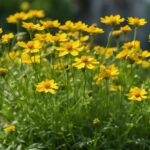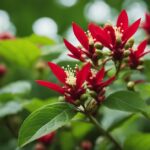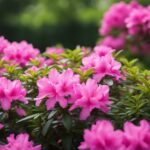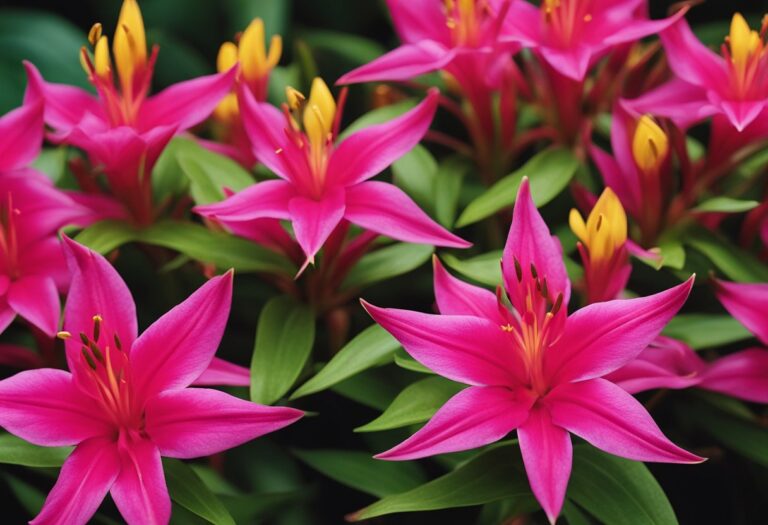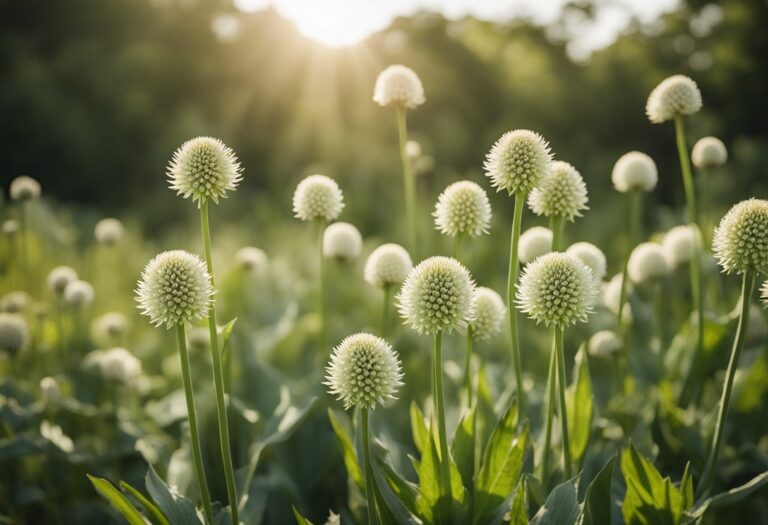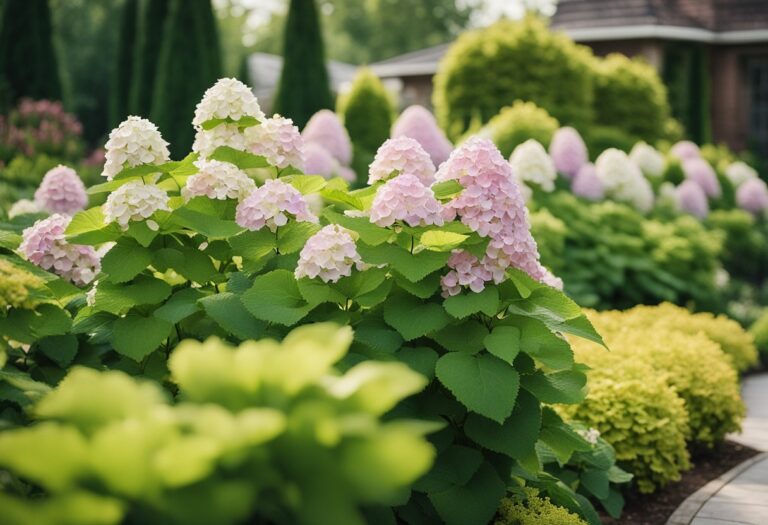Overview of Carolina Allspice
Carolina Allspice, a spice bush or sweet shrub, is a deciduous shrub. It is scientifically named Calycanthus floridus and is native to the southeastern United States.
The shrub typically grows to a height and spread of 6-12 feet. It thrives in a variety of soils as long as they are well-drained. It prefers partial to full shade, making it suitable for shady woodlands and along streambanks in its native habitat.
The flowers of Carolina Allspice are truly remarkable:
| Characteristics | Details |
|---|---|
| Appearance | Resemble small magnolia blossoms |
| Color | Dark red |
| Size | About 2 inches wide |
| Bloom Time | Mid-spring to mid-summer |
| Fragrance | A mixture resembling melons, strawberries, pineapples, and bananas |
Do not confuse it with Pimenta dioica, the plant that produces the allspice used in cooking. While its flowers and bark are fragrant and sometimes used in potpourris, they do not produce the culinary spice.
It’s important to highlight a notable caution about Carolina Allspice—it has parts that are poisonous if ingested. Always handle with awareness, particularly around pets and children. Despite this, with its low maintenance and appealing characteristics, Carolina Allspice can be a valuable addition to your garden for a natural splash of color and enveloping scent.
Botanical Description
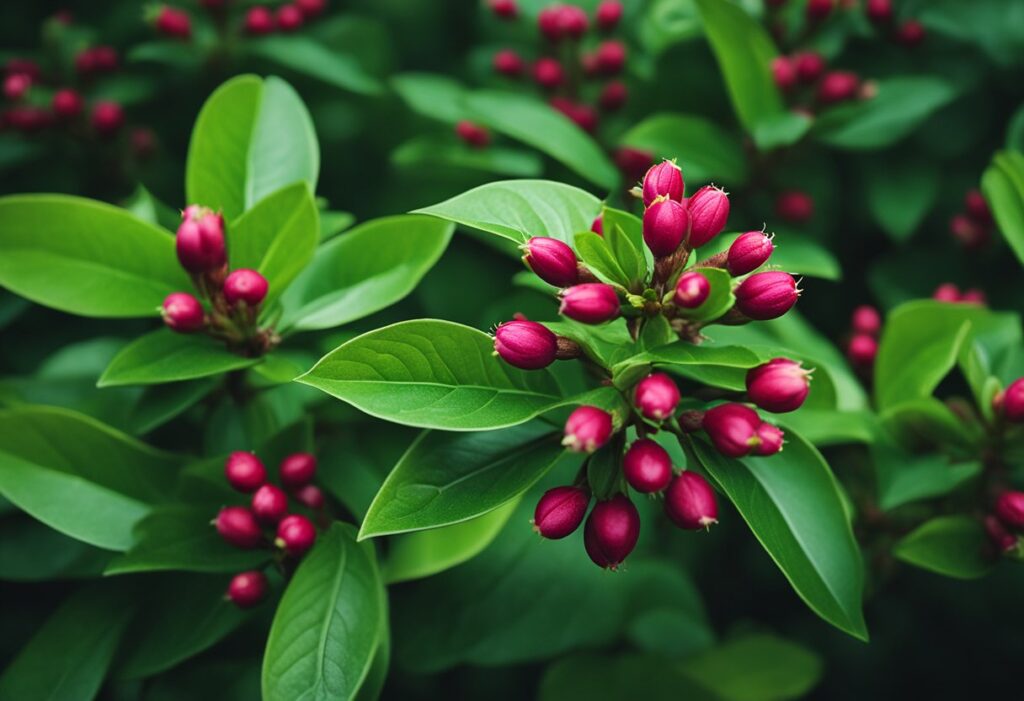
Your understanding of the Carolina Allspice, or Calycanthus floridus, will deepen as you examine its unique botanical features, including its structure, leaves, distinct flowers, and fruiting bodies.
Morphology
Carolina Allspice is a deciduous shrub with a dense and rounded growth habit. It often reaches a height of 6 to 9 feet and sometimes extends up to 12 feet. The shrub displays a suckering pattern, leading to a width slightly exceeding its height.
Foliage
The leaves of the Carolina Allspice are opposite and simple, with an ovate to elliptical shape. They typically measure between 2 to 6 inches long. During fall, your shrub’s leaves may turn an attractive yellow to golden brown.
Flowers
Carolina Allspice is amazed with its unusual, fragrant, reddish-brown to dark red flowers in May. Each flower spans approximately 2 inches across, with a display reminiscent of magnolia blossoms.
Fruit and Seeds
Your Carolina Allspice will produce urn-shaped fruiting capsules that turn brown in autumn. These seed capsules can persist into winter and add a unique visual interest to the landscape as other plants retreat into dormancy.
Cultivation and Care
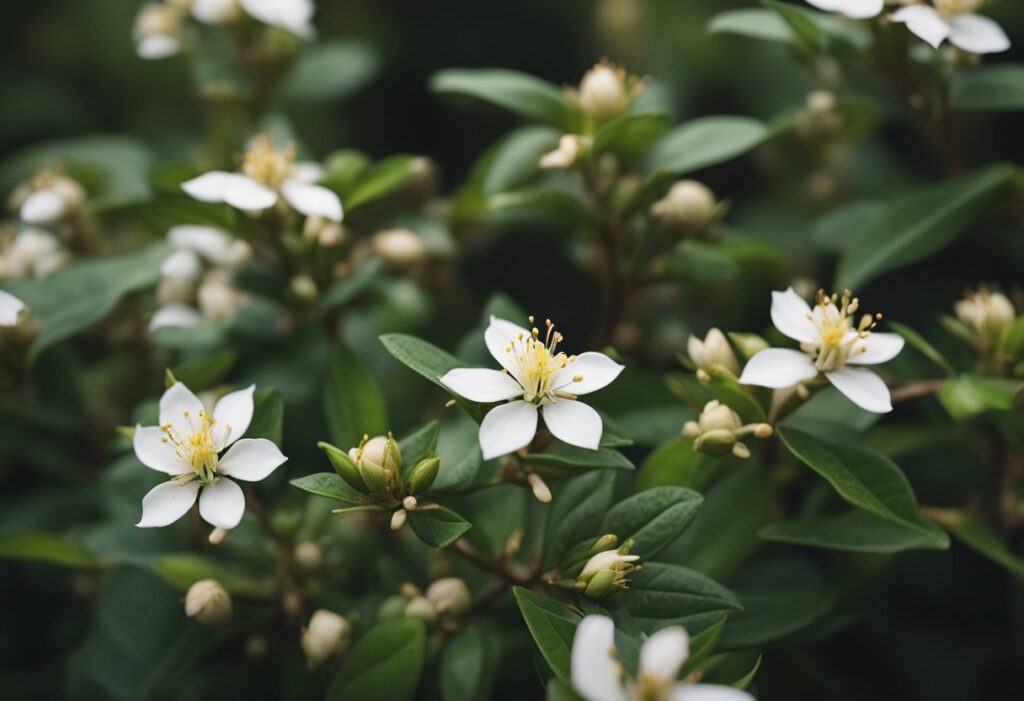
Carolina Allspice, or Calycanthus floridus, thrives with minimal effort, making it suitable for gardeners of all levels. However, its resilient nature requires proper planting and occasional maintenance to ensure its health and growth.
Planting Requirements
- Soil: Plant Carolina Allspice in well-draining soil with near-neutral pH. The plant is adaptable, but it performs best in moist conditions.
- Sunlight: Choose a location with full sun to partial shade. More sunlight encourages better flowering.
- Spacing: Space your plants 6 to 10 feet apart as they can reach up to 12 feet widths at maturity.
Maintenance and Pruning
- Watering: Keep the soil consistently moist, especially during dry periods. Mulching helps retain soil moisture.
- Pruning: Prune in late winter for shape or after flowering to encourage bushier growth. Shear for hedges or remove old wood to rejuvenate the plant.
Pest and Disease Management
- Pests: Carolina Allspice is relatively pest-resistant. However, watch for typical garden pests such as aphids and treat them promptly if they appear.
- Diseases: It is also resistant to most diseases. To prevent fungal issues, ensure good air circulation and avoid waterlogged soil.
Uses in Landscaping
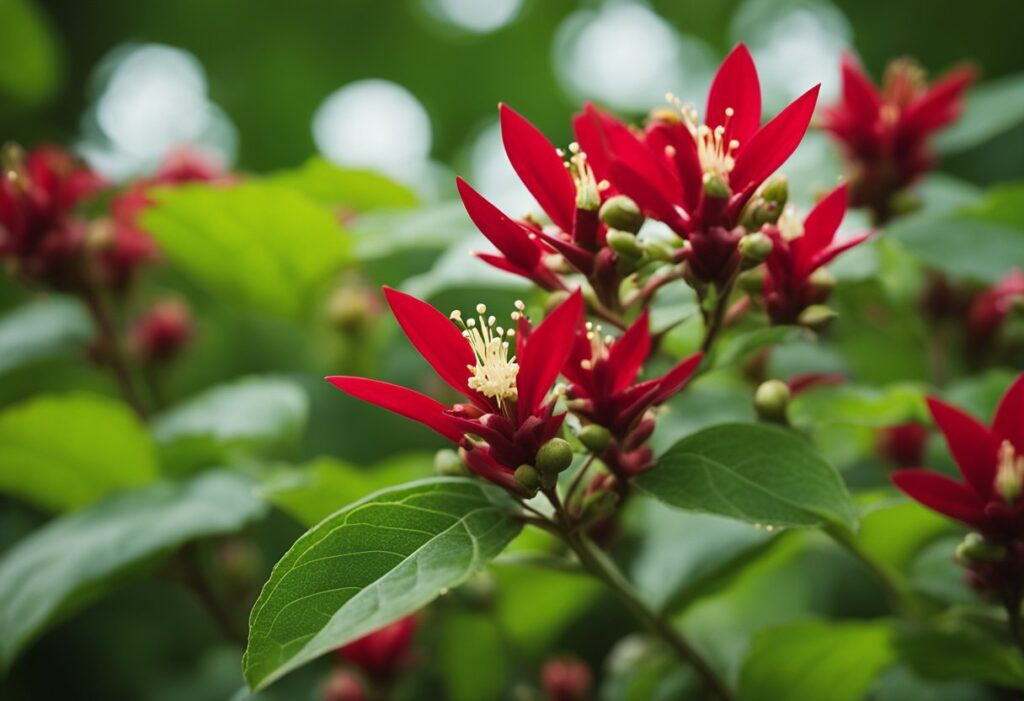
Carolina Allspice (Calycanthus floridus), a deciduous shrub known for its versatility and sensory appeal in landscaping, can greatly benefit your garden. Its dense, rounded form and aromatic flowers serve multiple purposes in your outdoor space.
Visual Interest:
- Spring to Mid-Summer: Enjoy a profusion of dark red flowers that can add a rich color to your garden.
- Year-Round: Its green, glossy leaves turn yellow in fall, providing extended interest.
Fragrance:
Carolina Allspice is celebrated for its sweetly-scented flowers. Planting it along walkways or near windows ensures its fruity and spicy fragrance permeates often-frequented areas or even into your home when windows are open.
Privacy Screen:
- Mature Size: Grows up to 8 feet tall and wide.
- Planting in rows will create a dense screen, offering privacy throughout the year.
| Soil Conditions | Light Requirements | Watering Needs |
|---|---|---|
| Moist, well-drained | Full sun to part shade | Regular watering until established |
Wildlife Attraction:
This shrub is not just for you; it also attracts pollinators such as bees and butterflies, adding life to your garden.
Consider pairing Carolina Allspice with companion plants like Little Henry® Sweetspire for textural contrast or Elderberry for additional wildlife benefits when planning your landscaping.
Propagation Methods
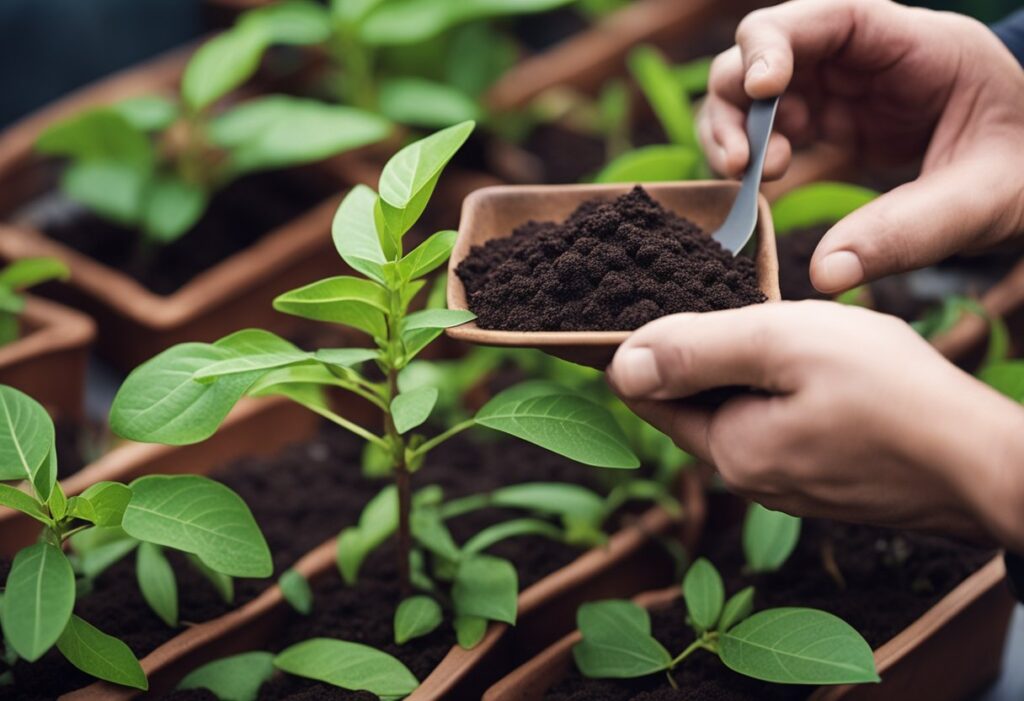
Carolina Allspice, known botanically as Calycanthus floridus, can be propagated using several methods. Each approach has its own set of steps to follow. Below are the most common ways to propagate this aromatic shrub:
Seed Propagation
- Autumn Sowing: Collect seeds as soon as they are ripe and sow them directly into a prepared bed in autumn.
- Cold Frame: If you’re starting seeds off-season, sow seeds in a cold frame to protect them from harsh weather.
Cuttings
- Softwood Cuttings: In early summer, take softwood cuttings from new growth. Ensure each cutting has at least 2-3 leaves.
- Procedure: Dip the cut end in rooting hormone, then place in a potting mix until roots develop.
Layering
- Autumn Layering: Bend a branch down to the ground and cover a portion with soil, exposing the tip. Over time, roots will form at the buried part.
- Separation: Once the roots are established, cut the new plant from the mother plant and transplant.
When applying these methods, remember to:
- Maintain moist soil conditions without overwatering.
- Provide shade for the first few weeks to prevent cutting dehydration.
- Check for rooting by gently tugging the plant; a slight resistance indicates root formation.
Frequently Asked Questions
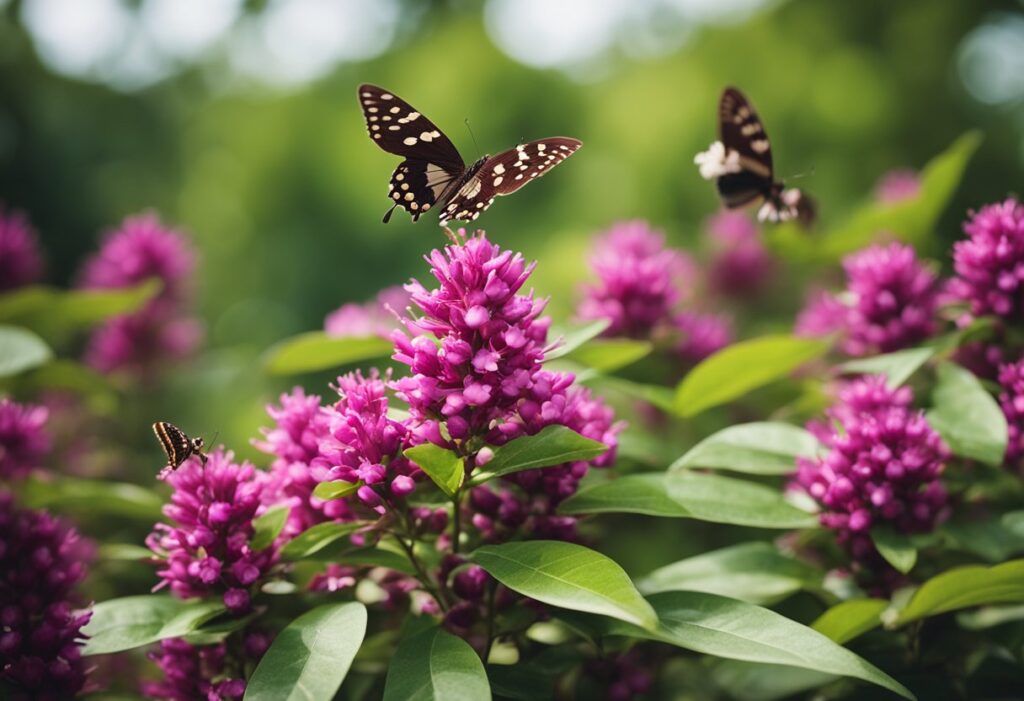
In this section, you’ll find concise answers to common questions about Carolina Allspice, ranging from its landscaping uses to growing habits.
How can I use Carolina Allspice in landscaping?
Due to its rich, dark red flowers and unique fragrance, Carolina allspice can be incorporated into your garden as a focal point. It functions well as a hedge or a standalone feature in a yard and complements other shrubs with its dense, rounded form.
Is Carolina Allspice considered an invasive species?
No, Carolina Allspice is not typically considered an invasive species. It is native to the Southeastern United States and grows well in many home gardens without displacing native flora.
What are the growth characteristics of Calycanthus floridus?
Calycanthus floridus, known as Carolina Allspice, grows into a dense, well-branched shrub. It typically reaches a height and spread of 6 to 12 feet. The plant blooms from mid-spring to mid-summer, producing aromatic dark red flowers.
Can Calycanthus floridus be grown in shaded areas?
Yes, Calycanthus floridus can be grown in partially shaded areas, although it prefers full sun to partial shade. It will bloom more profusely with greater sunlight exposure.
Are there any culinary uses for Carolina Allspice?
Despite its common name, Carolina Allspice does not have culinary uses like the unrelated allspice tree, Pimenta dioica, which produces berries used as a spice.
Does Calycanthus floridus tend to spread?
Carolina Allspice has a moderate growth rate and does not generally spread aggressively. Its well-behaved root system and form make it a good choice for residential landscaping without concerns about excessive spreading.

